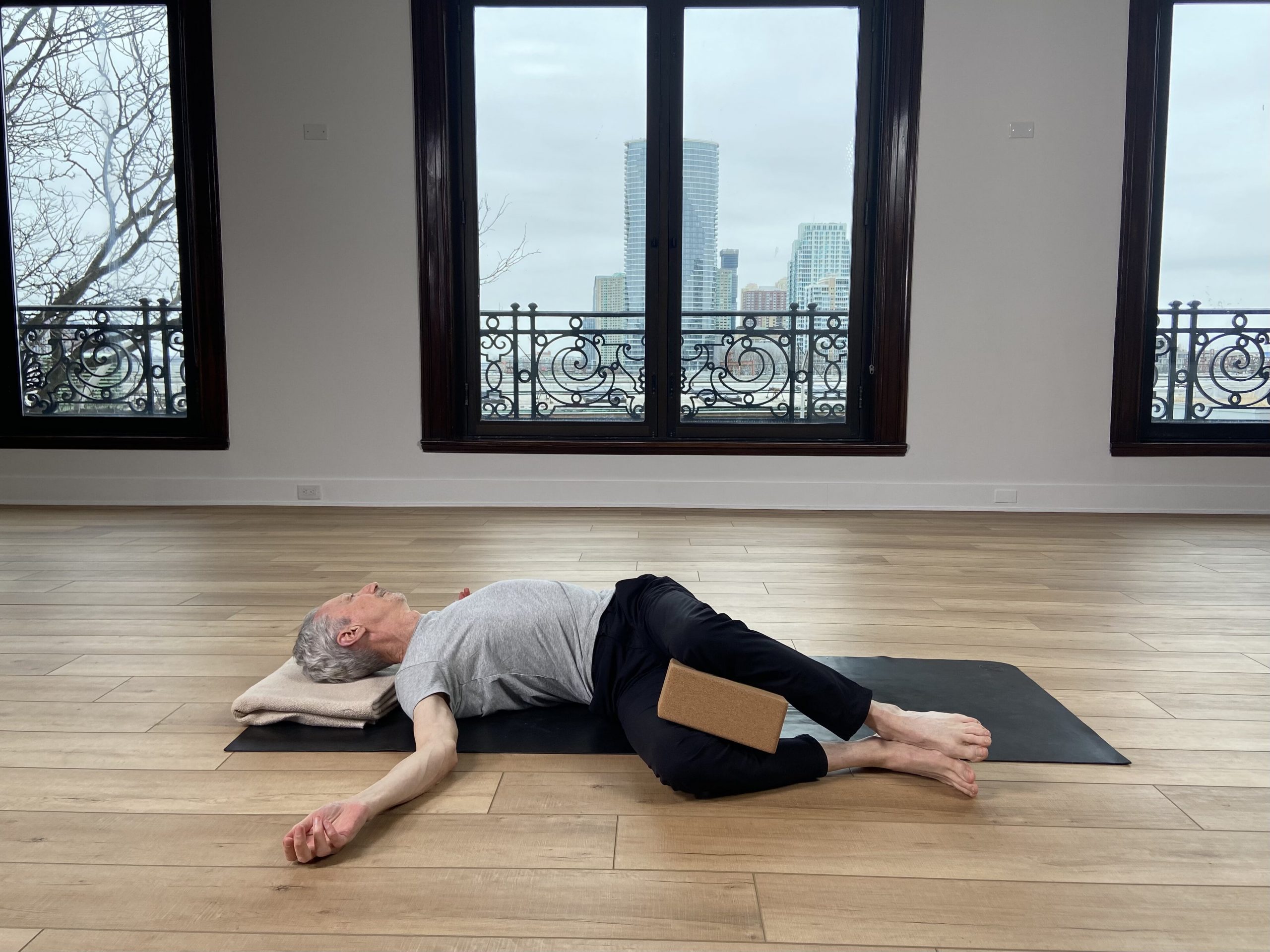
Anatomy can seem intimidating as a yoga teacher, or even a yoga practitioner, but it doesn’t have to be. Let’s explore some of the common ways anatomy can enhance your yoga practice. While this article mainly focuses on yoga practice, other movement professionals, such as personal trainers, may find the info helpful.
1. A deeper understanding of the skeleton
Understanding how your skeleton works in yoga practice can help you keep your bones and connective tissues healthy. Most people know that the bones support the body and provide a framework for movement. However, many people may not be aware that bones are living tissues. They continually rebuild themselves throughout life in response to the stresses we put on them. This is why weight bearing exercise helps to strengthen bones.
The skeletal system doesn’t just include bones, though. Joints and the connective tissues that support them, including cartilage and ligaments, are also considered part of the skeletal system. Loading your joints through a full range of motion helps strengthen those tissues, which is why yoga practice can also help maintain healthy joints.
2. A deeper understanding of the muscles
Muscles provide the power to move the body. Yoga involves movements of all of the major joints of the body, meaning many muscles are activated during yoga practice. Researchers at the University of Miami studied how 14 muscle groups were activated during the Surya Namaskar A and B sequences. These muscles included upper body, mid body and lower body muscle groups, indicating how much of the body’s musculature is involved in these sequences.
Learning where the major muscles are located and how they work will help you understand which poses target particular muscles, and how to tailor a practice to strengthen or stretch those muscles. Plus, as a teacher, you’ll be better at sequencing and cuing your classes.
3. Why/How the spine supports all movement
The spine not only supports the trunk, shoulder girdle and head, it’s integral to almost every movement we make and it protects the spinal cord. Understanding the structure of the vertebrae and how it affects the way the spine moves will help you teach and practice poses from forward bends to backbends to twists with more confidence.
Joe Miller is our anatomy course instructor and he has an extensive background in anatomy along with a passion for yoga. Here is a series Joe developed to focus on the spine.
4. A newfound respect for your body
The human body is extraordinary! The more you learn about it, the more impressed you will be with how well it works and moves. And as a teacher, the more you can inspire your students to realize how unique and absolutely their mind-blowing bodies are, in all the shapes, sizes and frames that they come in, the more they will be empowered in their own practice.
5. Understanding how body parts work together
Nothing in the body works in isolation. The movement of one body part affects another, and then another, like links in a chain. As both a practitioner and teacher, understanding these chains of movement will help you see the “why” behind common alignment instructions and how to modify those cues for individuals.
6. The natural ways our bodies move
Yoga originated in the Eastern hemisphere and has been around for over 5,000 years. It is one of the oldest forms of physical movement, although it has transformed in many ways since its inception.
Yoga embodied many natural movements and incorporated them into a practice that also focuses on the spiritual aspect of our lives, transforming what ‘exercise’ means for people all over the world. One of the ways yoga differs from other forms of exercise is its emphasis on the importance of developing awareness, including body awareness. The clearer your image of the anatomy of your body and how it works and moves, the more accurate and subtle your awareness during your practice will be.
7. What yoga does to our bodies
Yoga incorporates both the body and mind, tied together through attention to the breath. Most of the time we breathe unconsciously, but we can also breathe with conscious awareness. The breath can serve as a way to indirectly affect unconscious aspects of the nervous system, and is a powerful tool to help us cope with stress with more flexibility and resilience.
In addition to a comprehensive overview of the skeletal and muscular systems, our yoga anatomy course covers the respiratory and nervous systems to help you better understand the links between the body, breath and mind. The course also features quizzes at the end of each lesson so you can test your knowledge.
Recommended Readings:
Yoga Anatomy – Leslie Kaminoff and Amy Matthews
Anatomy of Movement – Blandine Calais-Germain
The Body in Motion: Its Evolution and Design – Theodore Dimon







